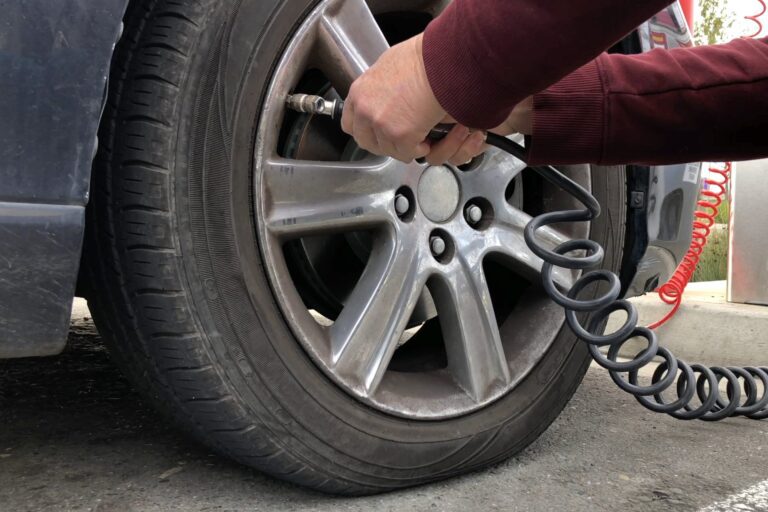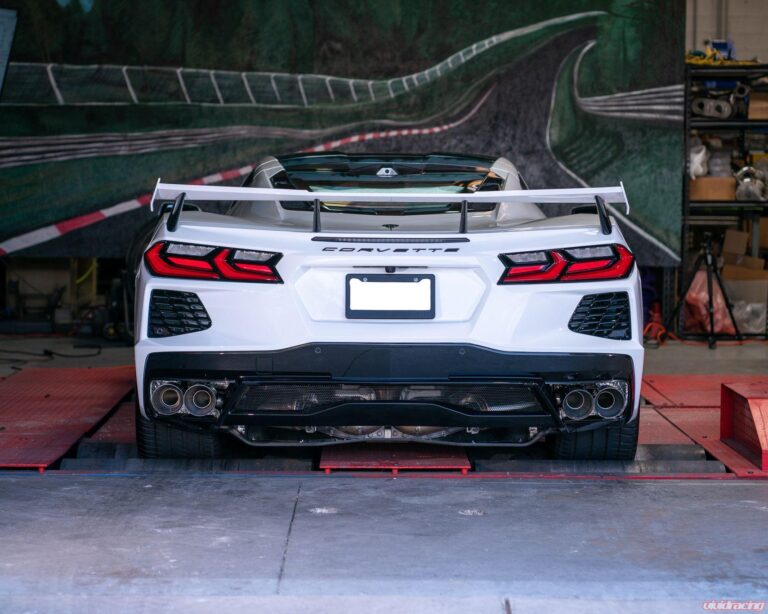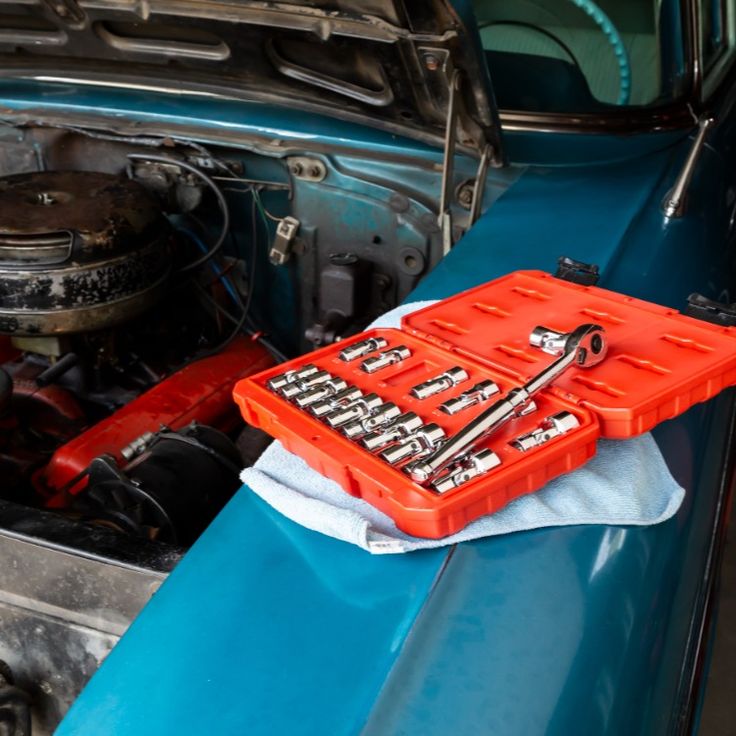How to Easily Identify a Clogged Muffler: Essential Tips
To tell if a muffler is clogged, inspect for signs of reduced engine power and loud exhaust noises. A clogged muffler can restrict the flow of exhaust gases, leading to decreased engine performance and increased noise levels.
Identifying A Clogged Muffler By Sound
If your car is producing a roaring or rumbling noise from the exhaust, it may indicate a clogged muffler. This noise is often caused by a blockage in the exhaust system, which can restrict the flow of exhaust gases. Another sign of a clogged muffler is a hissing or sputtering sound coming from the tailpipe. This sound occurs when the exhaust gases are unable to escape properly. In addition to unusual noises, a clogged muffler can also result in decreased engine performance. This is because the exhaust gases cannot exit the engine efficiently, causing a loss of power. It’s important to address a clogged muffler promptly to prevent further damage to your vehicle’s engine and exhaust system.
Visual Clues Of A Clogged Muffler
Visual clues can help determine if your muffler is clogged. Thick black smoke coming from the exhaust pipe is one such clue. This indicates a possible clog in the muffler, causing an improper fuel-air mixture and incomplete combustion. Another sign is sooty or carbon buildup on the muffler, indicating that exhaust gases are not flowing freely. Additionally, rust or corrosion on the exterior of the muffler may indicate a clog or damage that is impeding the flow of exhaust gases. It is important to address a clogged muffler promptly, as it can lead to reduced engine performance, increased emissions, and potentially engine damage. If you notice any of these visual clues, it is advisable to consult a professional mechanic to diagnose and fix the issue.
Testing For A Clogged Muffler
If you suspect that your muffler is clogged, there are a few tests you can perform to confirm your suspicion. One method is to conduct a backpressure test. This can be done by inserting a pressure gauge into the oxygen sensor port and measuring the pressure within the exhaust system. If the pressure reading is significantly high, it may indicate a clogged muffler.
Another way to determine if your muffler is clogged is through a visual inspection of the exhaust system. Look for any signs of blockage, such as a build-up of soot or debris. Additionally, you can listen for any unusual noises during acceleration. A clogged muffler can cause a decrease in engine performance, leading to louder or irregular sounds.
Regular maintenance of your exhaust system is important to ensure its proper functioning. If you notice any signs of a clogged muffler, it is recommended to consult a professional mechanic for further diagnosis and repairs.
Cleaning The Muffler With A Pressure Washer
When it comes to cleaning a clogged muffler, using a pressure washer can be an effective solution. However, it is important to choose an appropriate pressure washer and nozzle to ensure safe and efficient cleaning.
| Appropriate Pressure Washer and Nozzle Selection |
| • The pressure washer should have enough power to remove the blockage without damaging the muffler. |
| • Choose a nozzle with a suitable spray pattern for the task. Avoid using a narrow nozzle that can concentrate too much pressure in one area. |
Spray Pattern and Technique
Proper spray pattern and technique are crucial for cleaning the muffler effectively.
- • Begin by spraying from a distance to remove loose debris.
- • Gradually decrease the distance to focus on the clogged areas.
- • Use broad sweeping motions to cover the entire surface of the muffler.
Precautions and Safety Measures
When cleaning a muffler with a pressure washer, it is important to take necessary precautions to avoid any accidents or injuries.
- • Wear protective gear, including gloves and eye goggles.
- • Ensure the muffler is cool to prevent burns.
- • Do not use excessive pressure that can damage the muffler or surrounding components.
- • Keep the pressure washer nozzle pointed away from yourself and others.
Cleaning a clogged muffler with a pressure washer can restore its functionality and improve overall engine performance. Follow these guidelines to safely and effectively remove blockages for a smooth-running vehicle.
Clearing Blockages With A Muffler Cleaner
Clearing Blockages with a Muffler Cleaner
When it comes to clearing blockages in your muffler, choosing the right type of cleaner is important. Not all cleaners are suitable for all types of mufflers, so it is crucial to select the one that is designed specifically for your vehicle’s exhaust system. Using the wrong cleaner can cause damage to the muffler or even the entire exhaust system.
Before using a muffler cleaner, make sure to carefully read the application and usage instructions provided by the manufacturer. These instructions will guide you on how to properly use the cleaner and avoid any mishaps. It is also important to follow the recommended frequency of use to ensure that your muffler stays clean and free from blockages.
Replacing A Clogged Muffler
htmlTo determine if your muffler is clogged, there are a few signs you can look out for. One of the most common indicators is a decrease in engine performance, as a clogged muffler restricts the flow of exhaust gases and can cause your engine to work harder. Additionally, if you notice a louder than usual exhaust noise or a sputtering sound, it could be a sign of a malfunctioning muffler. To replace a clogged muffler, you first need to select a compatible replacement. Consider the make and model of your vehicle, as well as any specific requirements or preferences you may have. It’s important to choose a muffler that is designed to fit your vehicle and has the appropriate specifications. Once you have the replacement muffler, you will need a few tools and equipment for the installation process. These typically include wrenches, a jack or ramps to lift the vehicle, and safety goggles for eye protection. It’s important to gather all the necessary items before you begin the installation to ensure a smooth process. Now, let’s go through the step-by-step guide to removing and installing the new muffler. Please refer to the table below for a detailed breakdown of the process:
| Step | Description |
|---|---|
| 1 | Using the appropriate wrench, loosen and remove the bolts securing the old muffler. |
| 2 | Carefully disconnect any attached pipes or brackets to fully remove the old muffler. |
| 3 | Inspect the exhaust system components for any damage or signs of wear. Replace if necessary. |
| 4 | Position the new muffler and attach it to the exhaust system using the provided hardware. |
| 5 | Ensure all connections are secure and tighten the bolts to the manufacturer’s specifications. |
| 6 | Lower the vehicle and start the engine to test the new muffler for proper functionality. |
Regular Maintenance And Inspection
Regular maintenance and inspection of your vehicle’s muffler is essential to ensure its proper functioning. Cleaning the muffler regularly helps to prevent the buildup of debris and dirt that can lead to clogs. This can be done by using a brush or compressed air to remove any loose particles from the muffler. Checking for potential blockages is another important step in maintaining your muffler. You should visually inspect the muffler for signs of corrosion or rust that could indicate a blockage. If you notice any abnormalities, it is important to address them promptly to prevent further damage. Another key aspect of muffler maintenance is identifying and fixing exhaust leaks. To do this, you can run your hand along the seams and connections of the muffler while the engine is running to feel for any air or gas escaping. If you detect a leak, it is advisable to have it repaired by a professional. Taking these steps will help to ensure that your muffler remains free from clogs and operates efficiently.
Quality Fuel And Proper Engine Tuning
Using high-quality fuel and regularly tuning the engine are crucial factors in determining if a muffler is clogged. When it comes to using fuel, it is important to choose a reliable brand that meets the manufacturer’s specifications. Quality fuel contains fewer impurities that can accumulate in the muffler and cause clogs. Additionally, following the manufacturer’s recommendations for engine tuning and maintenance is essential. Regular tuning ensures that the engine is running optimally, reducing the risk of clogs in the muffler. Proper engine tuning includes checking and adjusting the air-fuel mixture, ignition timing, and other parameters as per the manufacturer’s guidelines. By following these recommendations, you can help prevent the muffler from getting clogged and extend its lifespan.
Safe Driving Practices
Safe driving practices play a crucial role in maintaining the health of your muffler. Avoiding excessive acceleration and sudden stops prevents unnecessary strain on the vehicle’s exhaust system. Using appropriate gears and avoiding over-revving also help in reducing the wear and tear on the muffler. The way you drive greatly impacts the lifespan of your muffler. Aggressive driving habits such as frequent hard braking or constantly running the engine at high speeds can put excessive stress on the exhaust system, including the muffler. It is essential to develop good driving habits, such as driving smoothly, maintaining a consistent speed, and avoiding unnecessary strain on the vehicle. By following these safe driving practices, you can prolong the life of your muffler and avoid potential issues associated with a clogged or damaged muffler.

Credit: haynes.com
Frequently Asked Questions Of How To Tell If Muffler Is Clogged
What Are The Symptoms Of A Clogged Muffler?
Symptoms of a clogged muffler include reduced engine power, sputtering or backfiring noises, decreased fuel efficiency, and a rotten egg smell. Exhaust may leak out, causing a louder engine noise. It’s essential to address these symptoms promptly to prevent further damage and ensure the vehicle’s optimal performance.
Can You Unclog A Muffler?
No, you cannot unclog a muffler. It requires professional help to fix the issue.
How Do You Unblock An Exhaust?
To unblock an exhaust, follow these steps: 1. First, locate the blockage by inspecting the exhaust system. 2. Use a wire brush to clean off any accumulated debris or soot. 3. If the blockage persists, use a high-pressure air hose to blast it out.
4. Check for any damaged or corroded parts that may need replacing. 5. Finally, start the engine and ensure that the exhaust is flowing smoothly.
What Can Happen If Your Exhaust Is Clogged?
A clogged exhaust can lead to reduced engine performance, increased fuel consumption, engine overheating, and potential damage to the catalytic converter. It can also cause excessive exhaust noise, unpleasant odors, and even stalling or difficulty starting the vehicle. Additionally, a blocked exhaust can release harmful emissions into the cabin, posing a health risk to the occupants.
Conclusion
A clogged muffler can cause various problems such as reduced engine performance, increased fuel consumption, and loud noises. By being aware of the signs mentioned in this blog post, you can easily determine if your muffler is clogged. Regular inspection and maintenance can help prevent potential issues and ensure a smooth driving experience.
Don’t ignore the symptoms and take prompt action to keep your vehicle running smoothly and efficiently.







